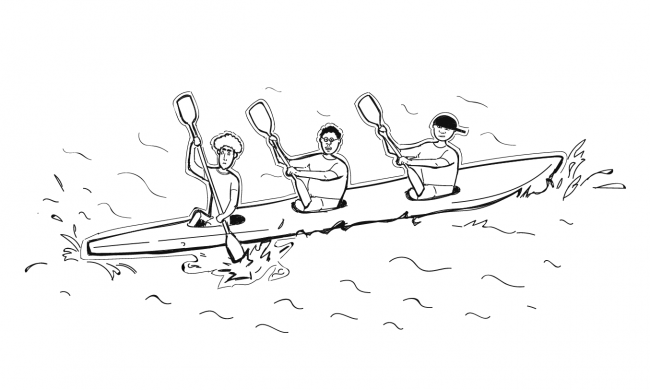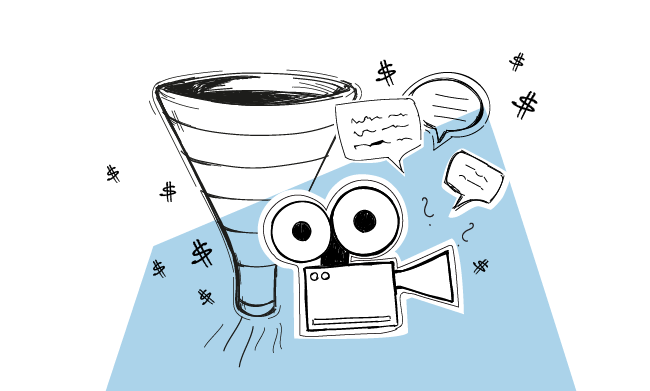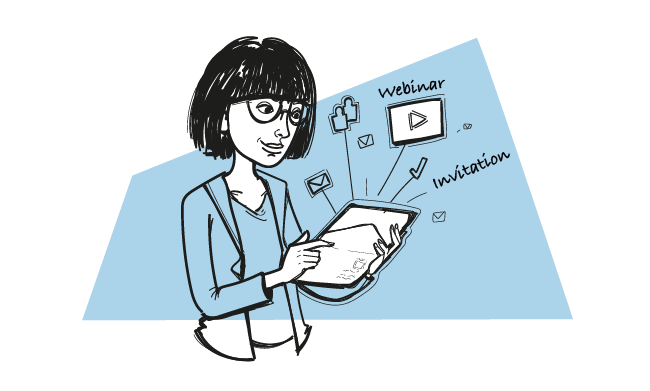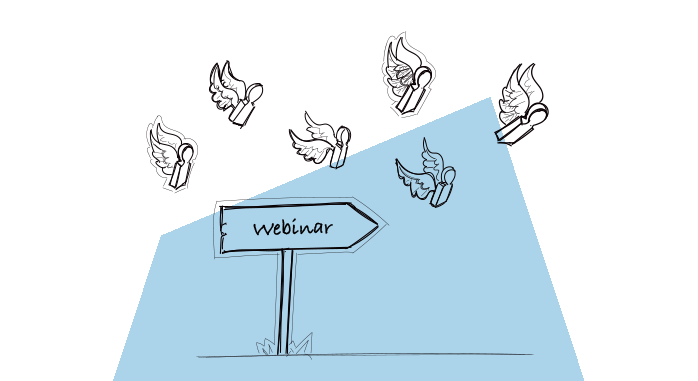I’m sure you can agree that webinars are time-consuming and stressful – we’ve been there while organizing Woodpecker webinars. Not only do you have to carefully plan the whole thing out, but you also need to oversee a lot of things, such as recording & sound quality, take care of the Internet connection, plus you need to make sure there’s enough space for everyone to attend the webinar.
But it’s all worth when you aim to increase sales. The number of people that will convert into customers can be astounding (providing you invited the sort of crowd that matches your ICP). How to make that happen?
I have three words for you: a webinar email sequence.
What is a webinar email sequence and how can it increase conversion?
Webinar email sequence is a series of follow-ups you send before and after the webinar take place. The goal of following up webinar registrants before the event is to boost their engagement and increase the show-up rate. Following up after the webinar is focused on warming up your webinar leads until conversion.
Webinar leads require a longer time to go through the buying cycle. Some of them will eventually not buy at all. But that’s all because there’s no encouragement to buy from your sales team. A prompt follow-up after a webinar can be the sort of encouragement that your webinar leads need in order to convert into paying customers.
All in all, a follow-up email after a webinar can be a great conversion tactic if executed well.
Half of the work is done before the webinar
Following up after a webinar won’t magically increase conversion rates. You need to prepare for it and create a plan. First, meet with marketing to create a cohesive conversion strategy.
Without the marketing department, the sales team cannot craft an effective follow-up sequence, and without the sales team, the conversion rate won’t be as high. Here’s the exact formula you can replicate.
- The marketing team informs the sales team they’re hosting a webinar.
- They tell the sales reps who the webinar is for.
- The marketing team shares the webinar script with your sales reps.
- The marketing team tells the webinar attendees that someone may contact them after the webinar (opt-in requirement).
- The sales team qualifies a full list of webinar attendees.
Make your outbound sales team take the attendee list, go over it, and qualify them against your ideal customer profile. Whenever they find a lead that fits the ICP, they can try to convert that lead with a personalized follow-up sequence.
How to create a webinar email sequence to generate more leads?
We all know how to write a cold email follow-up. Effective cold email follow-ups are timely, relevant and packed with value. They are meant to get your prospects attention to the opening email and get them to respond to the first message and start a business relationship. How to take all of that and apply it to a post-webinar email follow-up?
Webinar attendees differ from the opening message recipients. First of all, they’ve already had an interaction with your brand, and quite recently at that. They know what your company does and hopefully, what kind of problems it solves. What they don’t know though is how it all relates to their business. Thus, you need to explain it to them.
#1 Stay subtle
I know that your aim is to increase conversions with a follow-up email so the first thing you would like to do is plastering your pricing all over the email and put a few “Sign up” call to actions. Hold on. It’s not the best tactic. It screams “I gave you something for free, so now I expect you to pay me back”.
As I’ve written above, people who attended your webinar don’t fully understand what value your product can bring their business. So, there’s an opportunity to show it to them. Be subtle. Show them that you’re there for them, ready to answer any further questions. Don’t pressure your leads. Get to know your prospect before you offer them something.
#2 Personalize your email beyond {{first name}}
The {{first name}} snippet cannot be the maximum of personalization you’re going to use in the follow-up email after your webinar. Besides, personalization goes well beyond mail merge fields. It starts with targeting.
Group the leads that fit your ICP into some sub-categories. Learn more about their business and try to reverse-engineer the customer journey for them. Start with the sign-up process and move back up until the time they registered for the time. Did they attend the webinar because they saw your Google ad? Or they got an invite from a specific Facebook group? It’s all valid info.
Here’s a list of selling questions you can use in the process of reverse-engineering their probable buyer’s journey. It’s originally compiled for prospecting but I think they can be equally useful for converting an inbound lead into sales. Read this:
For example, a year ago, we hosted a webinar for Quora users interested in prospecting. I recognized their knowledge gap – looking for cold leads. I could leverage this together with the information from their Quora profiles to personalize the follow-up messages. If you want to steal the exact same tactic, I described what we did on this blog. Here are Part 1 and Part 2.
#3 Use Q&A session to your advantage
Most webinar hosts hold Q&A sessions at the end of the webinar. During those sessions, the script is flipped – now, webinar attendees have the power to lead the conversation. They ask the host about the issues they struggle with.
What can you do with all that? Well, address those issues in the follow-up. It’s a trick that will make them open your follow-up message. It would be best if you could lead the conversation in a way they book a demo call with you. Yet, it can still be too early for that.
#4 Share additional free material
A great follow-up filler is sharing additional free material, such as a follow-up ebook, checklist or question poll and then ask them if the two of you could go over the piece together. Yeah, I know it’s hard to execute, yet you will earn the most important thing at this point – their attention.
Work together with the marketing team on this. Ask the content writer to smuggle some value-coated benefits into the copy. A well-written article that solves a problem or a practical case study can be very powerful. Content may be all you need to make them reply with a “yes”.
Check how to create a webinar email sequence in Woodpecker:
How to Create a Webinar Sales Funnel and Boost Webinar ROI? >>
Time to write your follow-up email
All in all, you want to make your inbound leads see your follow-up email is far from being the next stage of a marketing campaign. Quite the contrary, it’s an avenue for further conversation and an excuse for you to offer them assistance. Deep dive into your prospect’s business and show them that you know how to bring them value.
Log in to your Woodpecker account or sign up for a free trial to test it for yourself:
READ ALSO

5 Ways a SaaS Sales Team Can Cooperate with Marketing for Better Lead Generation
Marketing and sales used to be portrayed in stark contrast. Nowadays, there's an ongoing trend to go for "sales and marketing alignment" -- that is, making the two teams work together. There's little information on how to do it exactly. Many focus on improving the flow of information between the two departments. Is that all that can be done? Today, I'll show you a couple of ways the Woodpecker marketing and sales teams cooperate to create a streamlined lead generation process.

How to Create a Webinar Sales Funnel and Boost Webinar ROI?
In search of new ways to boost sales these days, many companies have started hosting webinars. For some, it’s uncharted territory and a new challenge to deal with. Others look for smart ways to scale their existing efforts. No matter if you’re a webinar newbie or you already have some experience in this field, a smooth, efficient, and scalable process should be the foundation of your webinar sales funnel. Let me show you how you can leverage the power of automation to generate and nurture your webinar leads until they try your product.

5 Webinar Invitation Email Templates + Best Practices
As you polish up your webinar presentation, it’s time to spread the word about the upcoming event and send out the invitations. If you’re stuck at “Hi!”, don’t worry -- I’ve done some research and prepared five webinar invitation email templates to get you inspired.

